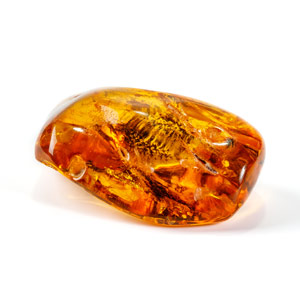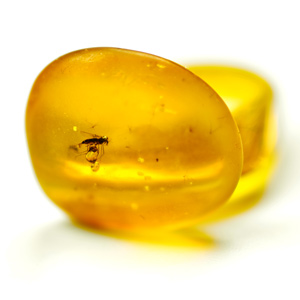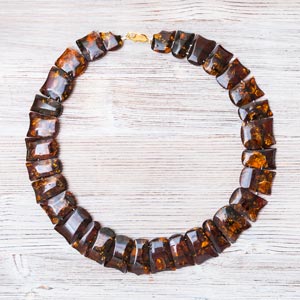amber
Amber, a mesmerizing gemstone with a history that spans millennia, derives its name from the Arabic term "anbar." This fossilized resin, often referred to as "nature's time capsule", originates from ancient trees and carries within it the stories of the prehistoric world.
Comprising primarily carbon, hydrogen, and oxygen, amber's chemical composition has an organic nature, setting it apart from most gemstones. It is appreciated for its warm, golden to reddish-brown hues, often enhanced by captivating inclusions.
Amber's geological journey begins as resin exudes from ancient coniferous trees. Over millions of years, this resin solidifies and eventually washes into water bodies, where it may be shaped by ocean currents into the gemstone we treasure today.
One of amber's most intriguing qualities is its ability to preserve ancient organisms, such as insects, within its translucent depths. This property has made it a valuable resource for palaeontologists and a cherished gemstone for jewellery designers, connecting us to Earth's distant past in a truly unique way.
Click on the terms in the table below to discover their meaning
Click on the terms in the table below to discover their meaning
| Name | Amber |
|---|---|
| Category | Organic |
| Chemical Formula |
C12H20O |
| IMA Symbol | Not approved |
| Crystal System | Amorphous |
| Crystal Habit | Amorphous, nodular, pulverant |
| Twinning | Absent |
| Cleavage | None |
| Fracture | Conchoidal |
| Tenacity | Brittle |
| Hardness (Moh's Scale) |
2 - 2.5 |
| Specific Gravity | 1.05 - 1.15 |
| Diaphaneity | Transparent |
| Colour | Yellow, brown, green, orange, red, blue, white, bicolour, multicolour |
| Streak | White |
| Lustre | Resinous |
| Optical Class | Isotropic |
| Refractive index | n = 1.54 - 1.55 |
| Birefringence | Absent |
| Dispersion | Rd = 0.005 - 0.006 |
| Pleochroism | Absent |
| Clarity | Type III |
| Notable Varieties | Baltic Amber, Burmese Amber, Dominican Republic Amber, Mexican Amber |
References
Arem, J. E., & Clark, D. (2020, September 17). Amber Value, Price, and Jewelry Information. Retrieved from International Gem Society: https://
Mineralogy Database. (2012, September 5). Amber Mineral Data. Retrieved from Mineralogy Database: http://


